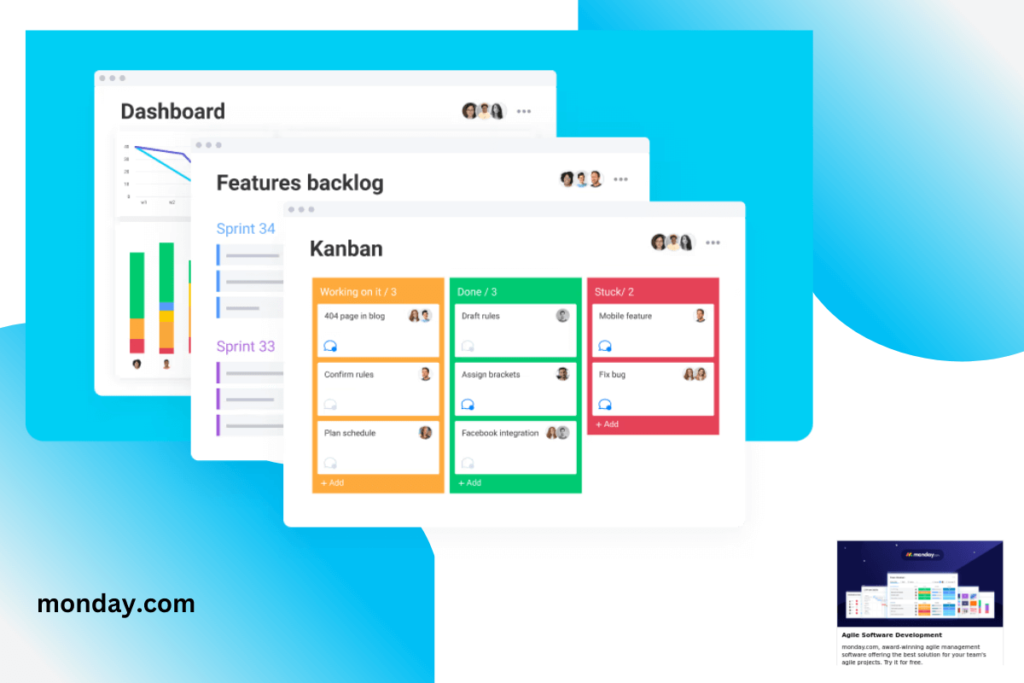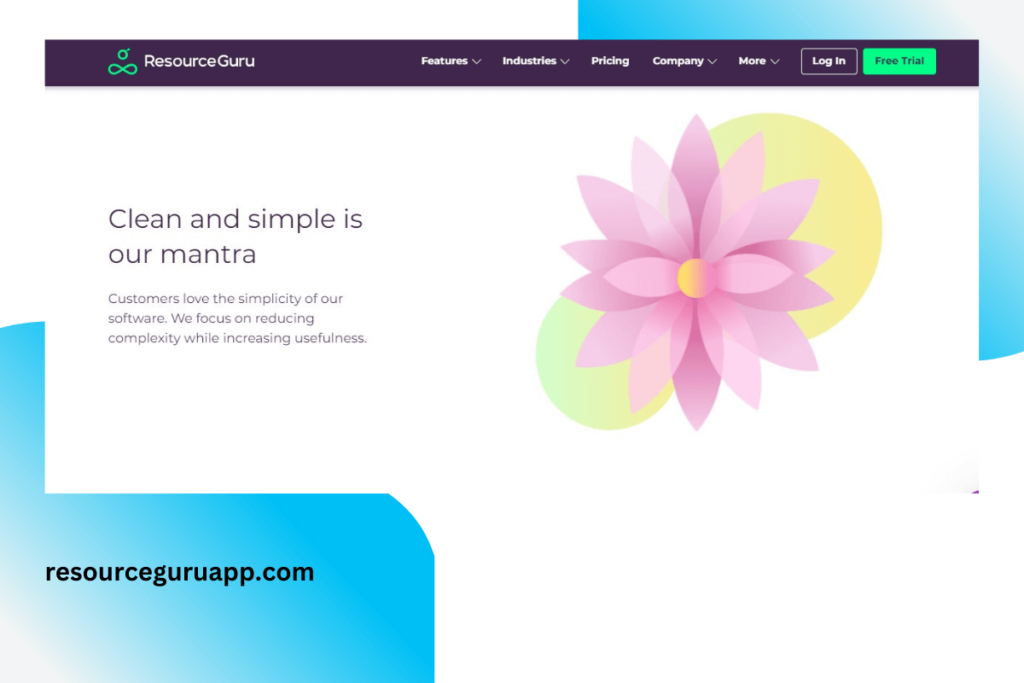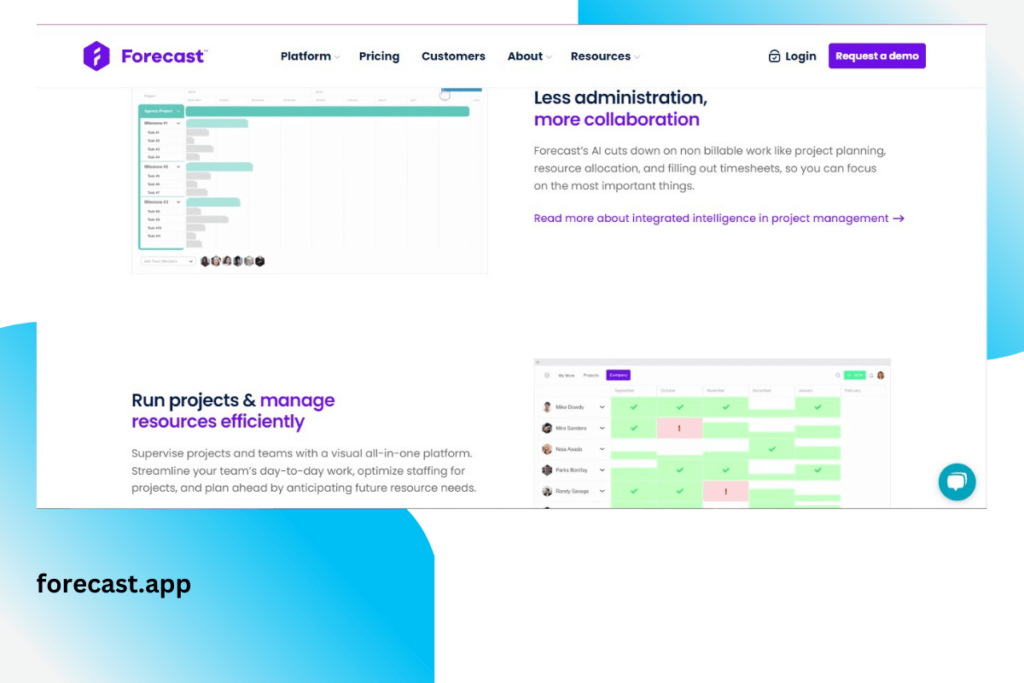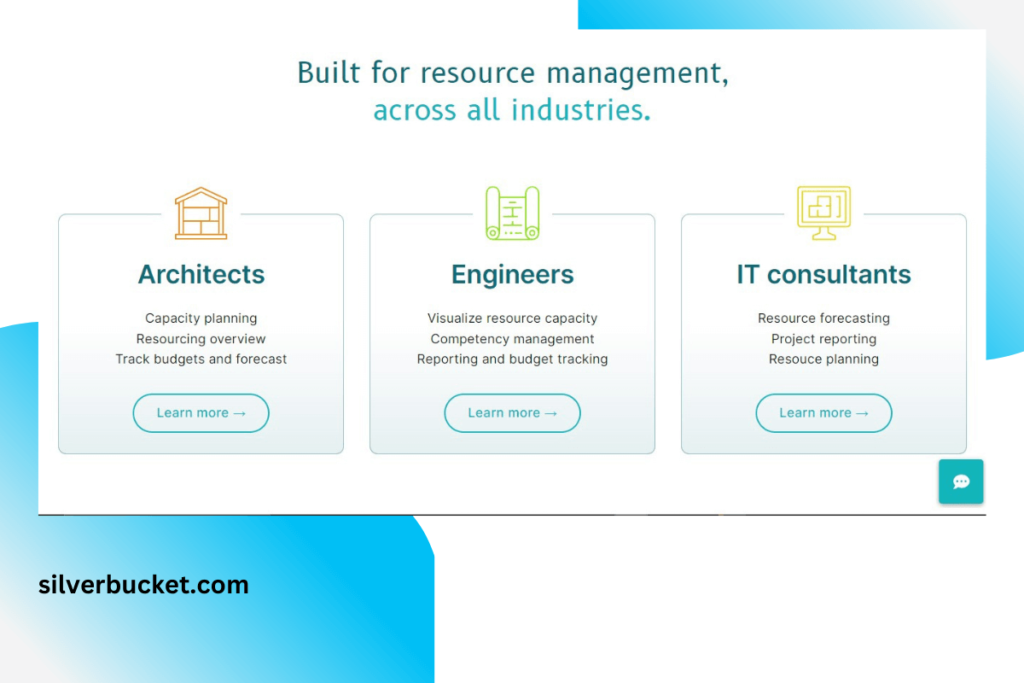RELATED: Most Popular Project Management Systems | Administrative Project Management Software | Creatives Project Management Software
Behind every project is a team of professionals, expectant clients, and a group of resources. Resource management software inputs these factors into an interconnected, harmonious process that promotes efficiency, productivity, and collaboration. Delivering high quality projects requires a high performing team. Listed below are the top five most trusted resource management software, complete with featured offerings to keep your team and organization performing at its best.
Upfront Conclusion
The best resource management software right now is Monday and Resource Guru
The Top 5 Best Resource Management Software
- Monday – Best Trusted Offering
- Resource Guru – Best Overall
- Float – Best for Resource Allocation
- Forecast – Best for Automation
- Silverbucket – Best for Project-Heavy Teams
1. Monday – Best Trusted Offering

PRICING: Free for up to five users, otherwise it ranges from $10-$20 per user per month. There is an enterprise level option in which you must contact the vendor to obtain a quote for. Extra savings apply when you commit annually. A 14-day free trial for paid plans is available.
Monday a project management software that centralizes resources such as tools and files all in one convenient interface. It is highly flexible and customizable to facilitate workflow organization. This causes an intuitive chain reaction within the workplace, bringing your team together to complete projects quicker through the power of automation and stunning visual reports.
KEY FEATURES:
- Kanban and Gantt boards.
- Document and filing solutions.
- Automation tools and Integration applications.
REASONS TO BUY:
- 200+ customizable dashboard and automation templates.
- Live webinars available for all plans to get the most out of each plan.
- Robust free offering for up to two users.
REASONS TO AVOID:
- Pricing and what is included in paid plans can be confusing.
- User team numbers are limited.
2. Resource Guru – Best Overall

PRICING: Ranges from $3-$8 per user per month. Extra savings apply when you commit annually. A 30-day free trial is available.
Resource Guru makes managing your team’s time a breeze. The software ensures you’ll never have to worry about over scheduling a team member, forget about someone’s time off, or micro manage anyone ever again. With flexible color coded scheduling, you’ll always know who is overworked and who is the right person for each task. Real-time updates and productivity reports allow you to see who has a vacation coming up, or if a team member is using their time wisely. Stay confident and help you and your team stay in control with Resource Guru.
KEY FEATURES:
- Resource scheduling tool to see who on your team is overworked and who is under utilized.
- Centralized resource pool and employee directory for fast, efficient resource management.
- Track and schedule your equipment use in one visually appealing calendar.
REASONS TO BUY:
- Color coding customization.
- The visibility and ability to plan ahead is helpful for quoting future jobs.
- Cost effective for what many features are offered.
REASONS TO AVOID:
- Updating schedules and resources is not as efficient as it could be for some.
3.Float – Best for Resource Allocation

PRICING: From $7.50-$12.50 per user per month. Extra savings apply when you commit annually. A 30-day free trial is available.
Float helps you put your best foot forward by utilizing your team’s best attributes for each project well done. Because the best resource a company can have is a high performing team, the platform gets to work with scheduling, planning, and capacity management tools. Get a birds eye view of employees to task availability, streamline projects to completion, and gain an understanding of your team’s capacity utilization all in a visually appealing interface.
KEY FEATURES:
- Schedule tasks and time off with a single click.
- Department capacity management.
- Set budgets and target milestones for each project.
REASONS TO BUY:
- Simple, modern UI design makes even the messiest schedules easy to look at.
- Search and data navigation.
- Block out time for projects and add notes, documents and other details for others to see.
REASONS TO AVOID:
- Administrative access tools are not intuitive.
- Integration capabilities could use some work.
4. Forecast – Best for Automation

PRICING: Choose from $29 or $49 per user per month, billed annually. There is custom enterprise level pricing in which you must contact the vendor to obtain a quote for. Further, there is a “Forecast Academy” offered for $200 purposed for broadening expertise within the software. A free trial is available.
Forecast facilitates efficiency by using the power of automation. As an AI-centered platform, the software reduces the time consumption of work by 50%. Focus on the bigger picture and what is truly relevant by cutting down on administrative tasks and encouraging more collaboration. Monitor team productivity and client satisfaction all in a comprehensive kit of reporting templates.
KEY FEATURES:
- Workflow automation that encourages teamwork and collaboration but cutting administrative work in half.
- Full profit and revenue data visibility to spot net drains and demystify calculations.
- Allocate and track projects.
REASONS TO BUY:
- Makes company processes simple and unbureaucratic.
- Seamless Jira integration.
- Receptive and accommodating customer support.
REASONS TO AVOID:
- Not mobile friendly.
- Schedule features could use some improvements.
5. Silverbucket – Best for Project-Heavy Teams

PRICING: Around $3-$9 per user per month depending on how large your organization is. A 30-day free trial is available.
Silverbucket recognizes that by optimizing resources, company profitability increases. They have even created a free guide on the very concept. Built for project-based businesses, team leaders gain a clear view on resource allocations, resulting in a better management of workloads and employee competencies. For further convenience, Silverbucket sports custom APIs, sync features, and integrations.
KEY FEATURES:
- Company, team, and individual workloads.
- Conflict transparency to see where help might be needed within teams.
- Wide range of reports to help you make better business decisions.
REASONS TO BUY:
- Web based and accessible.
- People allocation for projects is a breeze.
- Ideal for multi-project organizations.
REASONS TO AVOID:
- Presents a learning curve.
Frequently Asked Questions
How Do I Know When It Is Time To Ditch Spreadsheets And Adopt Resource Management Software?
Simply put, when your team and client base grows, so does your software. Spreadsheets might work for you in the beginning stages for a basic understanding of who does what on your team, but that’s it. Spreadsheets don’t offer the same time tracking, project reporting, and collaboration tools like resource management software. That is just the bare minimum, as the specialized software offers much more for a growing business such as resource allocation and reallocation to keep project workloads balanced and teams working more efficiently. The two simply do not compare in terms of value, allowing your company to flourish in focusing on important objectives and bigger pictures.
How To Implement An Effective Resource Management System?
- First, you and your team would need to discuss what features would be most successful to implement, and research for software that offers said features. This is not a one size fits all system, as every company operates differently and has different needs to get projects done well.
- Once a software is agreed upon, effectively utilizing it is just as important. You want to ensure you are getting the most out of your investment and using the software to its fullest potential. This can look like quantifying task to employee ratio and adjusting accordingly, reconfiguring schedules and workloads, and developing a game plan on completing projects.
- Lastly, maintaining consistency within schedules and task allocation is crucial to ensuring the integrity and productivity of your team. Doing so promotes trust and team work within the company, which results in continuous success and growth.
What Are Some Key Resource Management Features?
The following are some key components to consider when choosing a resource management software that works for you and your team:
- Project, capacity and resource management features to help track and assign efficiently.
- A clear, visually appealing user interface that helps everyone stay organized.
- Web or cloud-based options for cross platform capabilities.
- Easy integration with other tools for further optimization.
- Usability to ensure fast and easy implementation across teams and departments. This helps you spend less time training employees.
Some of these factors depend on how useful they will be to your organization as a whole. As always, do your research and consult your team’s needs to pick the software that compliments your company the best.
References and Links
- https://thedigitalprojectmanager.com/tools/resource-management-software/
- https://www.crazyegg.com/blog/best-resource-management-software/
- https://www.projectmanager.com/blog/best-resource-management-software
- https://www.adamenfroy.com/resource-management-software
- https://www.forbes.com/advisor/business/software/mondaycom-review/#other_benefits_section
- https://www.capterra.com/p/134429/Resource-Guru/#reviews
- https://www.capterra.com/p/136078/Float/reviews/
- https://www.capterra.com/p/138122/Forecast-it/#reviews
- https://www.capterra.com/p/184231/Silverbucket/#reviews
- https://www.techradar.com/reviews/mondaycom
